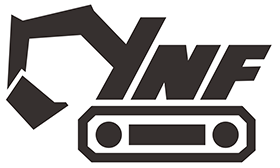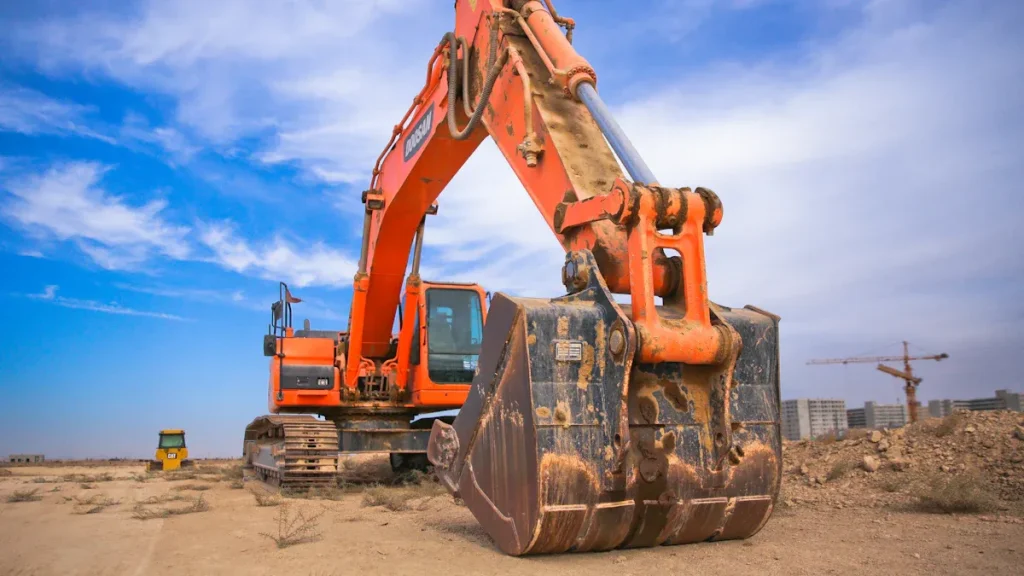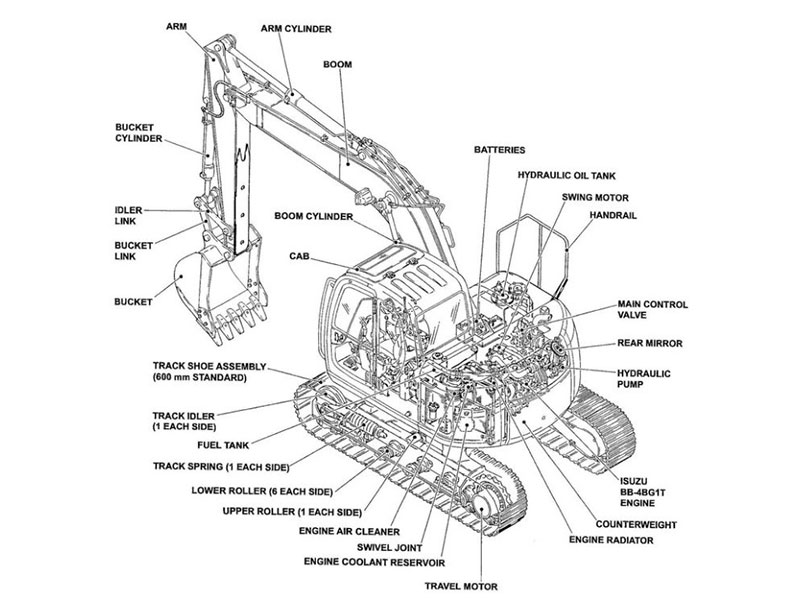
You want the best excavator parts price in 2025, but you also want your machine to last. Focus on both cost and quality. Smart buyers balance savings and reliability. Start by looking at real numbers:
Category | Details |
|---|---|
Used Excavator Prices | 20%-40% lower than new; $50,000–$550,000+ |
Maintenance Costs | $6,000–$18,000 per year |
Quality Factors | Maintenance history, operator training, technology use |
If you follow essential tips for buying, you will see immediate savings and long-term savings. Used parts can help you cut costs, but always check quality first.
Key Takeaways
Know exactly which excavator parts you need to avoid wasting money and keep your machine running smoothly.
Always check that parts fit your excavator model and meet quality standards to prevent breakdowns and extra costs.
Research and compare prices from different sellers, including OEM, aftermarket, and used parts, to find the best deals.
Inspect used parts carefully for wear and compatibility to save money without risking machine safety or performance.
Plan your inventory and maintenance ahead to avoid downtime, reduce repair costs, and keep your equipment working longer.
Best Excavator Parts Price
Identify Needs
Getting the best excavator parts price in 2025 starts with knowing exactly what you need. If you skip this step, you might waste money on the wrong parts or pay extra for things you do not use. You want to focus on the specific parts needed for your machine. This helps you avoid extra costs and keeps your excavator running smoothly.
Here’s how smart planning helps you save:
Big data tools help you see what parts you use most, so you can plan ahead and avoid last-minute rush orders.
You can decide which spare excavator parts to keep in stock and which ones to skip, so you do not tie up money in unused inventory.
Predictive analytics match your inventory to what you actually need, so you do not overbuy or run out.
Order optimization means you get the right parts at the right time, cutting down on backorders and extra vendor fees.
Real-time tracking lets you see where your parts are, so you can plan repairs and avoid downtime.
Forecasting helps you keep just enough spare excavator parts on hand, so you do not waste money or space.
Replenishment planning makes sure parts arrive when you need them, not too early or too late.
Tip: Always check your equipment manual and talk to a technician before you buy. This helps you pick the right excavator spare parts and avoid costly mistakes.
If you look at global pricing, you will see big differences. For example, Chinese excavator parts and machines often cost about half as much as Western brands. Here’s a quick comparison:
Excavator Type | Approximate Chinese Price | Approximate Western Price |
|---|---|---|
Mini (1 ton) | Around $4,000 | Around $10,000 |
Standard (5 ton) | Around $8,000 | Around $15,000 |
Heavy (20 ton) | Around $20,000 | Around $40,000 |
This table shows why it pays to compare options. You can get the best excavator parts price by looking at different brands and suppliers. Lower pricing does not always mean lower quality, but you need to check carefully.
Ensure Compatibility
You want every part to fit and work perfectly with your machine. Compatibility is not just about size or shape. It is about making sure the part matches your excavator’s model, year, and even the production batch. If you ignore compatibility, you risk breakdowns, safety problems, and wasted money.
Many people lose money because they buy parts that do not fit. Sometimes, using the wrong part can even cause accidents or damage your equipment. You can avoid these problems by following a few simple steps:
Check the part number and compare it with your machine’s manual.
Ask a professional technician if you are not sure.
Use manufacturer tools or online guides to match parts to your model.
Here’s a table that shows how checking compatibility helps your machine last longer and work better:
Evidence Aspect | Description | Impact on Operational Efficiency and Durability |
|---|---|---|
Use of Original Manufacturer Parts | Choose original or certified dealer parts that meet ISO, CE, or local standards | Lowers failure rate from mismatched parts by about 20% |
Verification of Part Compatibility | Check model, batch, and equipment specs before buying | Makes sure replacements match, so you avoid failures |
Professional Technicians | Let trained pros handle replacements using standard steps | Cuts operating errors to less than 5% |
Certified Aftermarket Parts | Pick certified and tested aftermarket parts | Drops failure rate by about 15% and keeps machines stable under heavy use |
Certification Standards | Make sure parts pass third-party testing and meet standards | Keeps your excavator running strong, even with tough jobs |
Note: Always look at total cost of ownership, not just the sticker price. High-quality, compatible parts may cost more upfront, but they save you money by reducing repairs and downtime.
When you focus on compatibility and the specific parts needed, you get the best excavator parts price and avoid hidden costs. You also make sure your equipment stays safe and reliable. Smart buyers always double-check before they buy.
Research and Compare
Thorough Research
You want to get the best deal on excavator parts, so you need to do thorough research. Start by looking at different suppliers. Check both local shops and online stores. Some people only look at one place, but you can save money if you compare more options.
Thorough research helps you spot the real value. When you check prices and part availability, you can plan your maintenance budget. This means you know the true cost of owning your equipment. You also avoid paying too much for parts that are easy to find somewhere else.
Here are some ways thorough research helps you:
You see how the cost of replacement parts affects your downtime and repair bills.
You can measure how well your machine works by comparing its performance to when it was new.
You find out if a part is easy to get or if it will take weeks to arrive.
You can plan your spending and avoid surprise costs.
You get more power to negotiate prices because you know the market and the history of the parts.
Tip: Always verify the credibility of online sellers before you buy. Look for reviews and ratings from other buyers.
Compare Sources
You should never buy the first part you see. Compare sources to find the best price and quality. Look at OEM dealers, aftermarket suppliers, online marketplaces, and local stores. Each source has its own pros and cons.
Use price comparison tools to check prices quickly. These tools help you see which seller offers the best deal. You should also read customer reviews to learn about the seller’s reliability. This step helps you avoid scams and poor-quality parts.
Source Type | Pros | Cons |
|---|---|---|
High quality, warranty | Higher prices | |
Aftermarket | Lower prices, wide choice | Quality can vary |
Online Sellers | Easy to compare, fast | Must verify the credibility of online sellers |
Local Stores | Fast pickup, local support | Smaller selection |
Note: Always verify the credibility of online sellers. This protects you from fake parts and wasted money.
If you take time to research and compare, you will find better deals and avoid costly mistakes. Smart buyers always do their homework before making a purchase.
Buying Used Excavator Parts
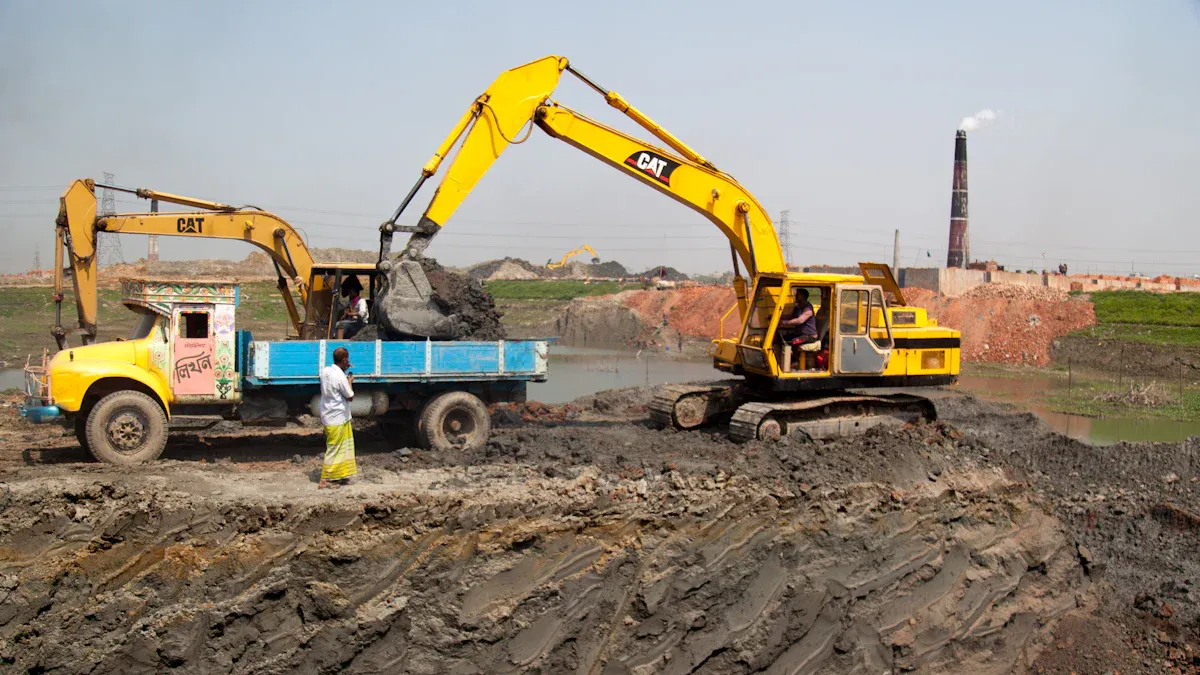
Inspect Quality
Buying used excavator parts can give you big cost savings, but you need to be careful. You want the best used excavator parts, not just the cheapest ones. When you start buying used excavator parts, always focus on evaluating part condition. Physical inspections matter a lot. You should look for signs of wear and tear, rust, cracks, or leaks. If you skip this step, you might end up with parts that break down fast or cause more problems.
Manufacturers like Volvo suggest checking the excavator undercarriage every 40 hours. This helps you spot damage early and keep your machine safe. When you do physical inspections, use a checklist. This makes sure you do not miss anything important. You should always check key components to inspect, such as pins, pivots, hydraulics, and bucket teeth. If you are evaluating auctioned parts, take extra time to look for hidden issues. Sometimes, auctioned parts look good but have problems inside.
Tip: Consistent inspection helps you catch damage early, so you avoid accidents and keep your excavator running longer.
When you focus on understanding wear and tear, you make smarter choices. You get more savings and better performance from your used parts.
Check Compatibility
You want every part to fit your machine perfectly. Compatibility is just as important as quality when buying used excavator parts. If you use parts that do not match your model, you risk breakdowns and safety problems. Counterfeit parts often do not meet OEM standards and may not fit right. This can lead to more repairs and higher costs.
Always check the part number, packaging, and warranty. Ask a trusted dealer or expert if you are not sure. When evaluating auctioned parts, make sure the attachments and hydraulics match your excavator’s system. If you skip compatibility checks, you might face frequent breakdowns or even safety risks.
Here’s a quick checklist for buying used excavator parts:
Verify part numbers and specs
Inspect packaging and material quality
Ask about warranty and return policy
Consult with experts or technicians
Note: The best used excavator parts will always fit your machine and help you avoid downtime.
Physical inspections and careful compatibility checks help you get the most out of buying used excavator parts. You save money, avoid trouble, and keep your equipment working strong.
OEM vs. Aftermarket
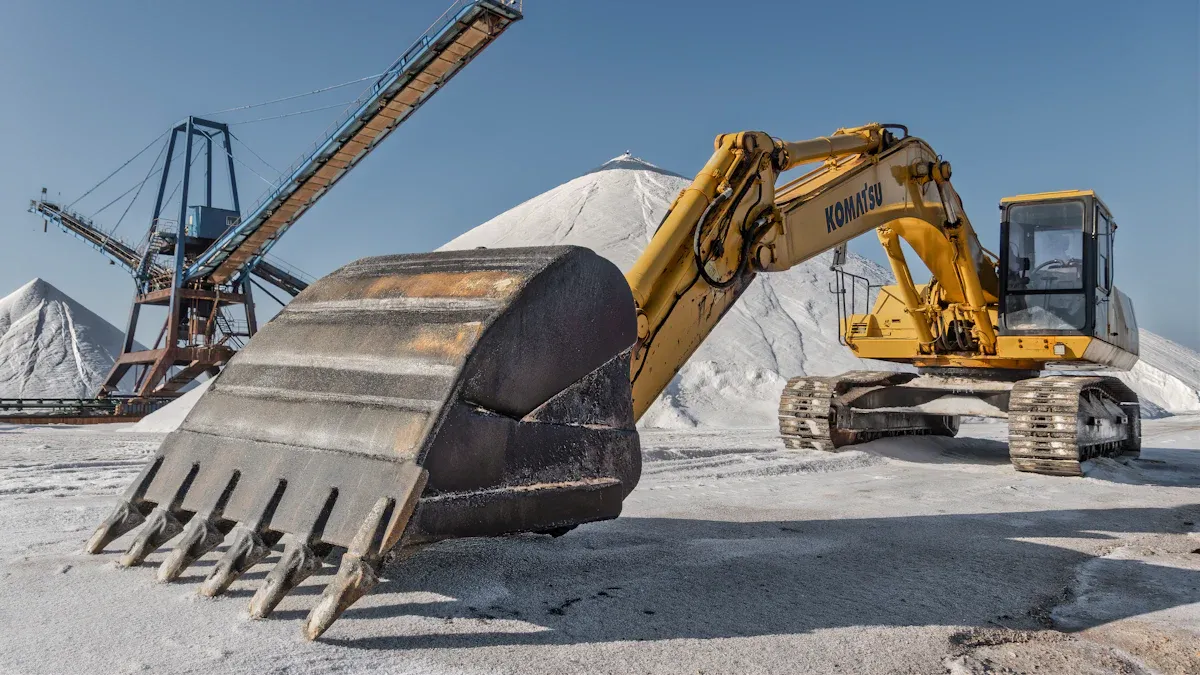
Pros and Cons
When you shop for excavator parts, you face a big choice: OEM or aftermarket. OEM stands for Original Equipment Manufacturer. These parts come straight from the company that made your machine. You get a perfect fit, strong reliability, and a warranty. Many people pick OEM parts for tough jobs or new machines because they want the best quality. Industry reports show that OEM parts work best for high-performance equipment. They last longer and match your machine exactly. You pay more, but you get peace of mind.
Aftermarket parts give you another path. These parts come from other companies, not the original maker. They cost less and you find them almost everywhere. If you have an older machine or a job that is not too hard, aftermarket parts can save you money. Reports say more people now choose aftermarket parts for less-critical work. The quality keeps getting better, and you see more choices online. Still, you need to check that the part fits and works well. Some aftermarket parts do not last as long as OEM, so always compare before you buy.
Tip: For the most demanding jobs, stick with OEM. For simple repairs or older equipment, aftermarket parts can be smart and cost-effective options.
Remanufactured Options
You might also see remanufactured parts when you shop for excavator parts. These are used parts that experts rebuild and test. They clean, fix, and upgrade each part so it works like new. Remanufactured parts go through strict checks, like precision machining and automated welding. Reports show these parts often meet or beat the standards of new parts. You get strong performance and save money at the same time.
Here’s a quick look at savings with used and remanufactured equipment:
Equipment Type | New Price (Approx.) | Used Price (3-5 years) | Savings (%) |
|---|---|---|---|
Excavator | $150,000 | $72,000 | 52% |
You also pay less for insurance and financing. Used parts do not lose value as fast as new ones. Many remanufactured parts last just as long as new parts. You help the planet, too, because you cut down on waste. OEMs and aftermarket companies both offer remanufactured parts now. You get more choices and better trust in what you buy.
If you want to save money and still get reliable parts, remanufactured and used options make sense. Always check the quality and make sure the part fits your machine. You can keep your excavator running strong without breaking the bank.
Negotiate and Save
Price Negotiation
You can get better deals on used excavator parts if you know how to talk with sellers. Good negotiation strategies help you lower the cost and get more value for your money. Start by learning about the current pricing for the parts you need. Check several sources and write down the numbers. This gives you a strong base for your talks.
When you meet the seller, ask questions about the part’s history. Find out how long it was used and if it had any repairs. Sellers respect buyers who know what they want. Use effective negotiation strategies like pointing out any wear or missing features. If you see a scratch or a dent, mention it. This can help you get a lower price.
You can also use other offers as leverage. Tell the seller you found similar used parts at a better price. This often leads to a discount. Always stay polite and friendly. Sellers want to work with buyers who are easy to deal with.
Tip: Write down your target price before you start. This keeps you focused during the negotiation.
Bulk and Early Deals
Buying used excavator parts in bulk can save you a lot of money. Sellers often give special pricing when you buy more than one part. You can ask for a package deal if you need several items. This works well for parts that wear out fast, like filters or bucket teeth.
Early deals also help you cut costs. If you plan ahead and order before you run out, you avoid rush fees and high last-minute pricing. Some suppliers offer lower prices for early orders. You can even lock in a good rate for the whole year.
Here’s a quick table to show how bulk and early deals work:
Deal Type | Benefit | Example Savings |
|---|---|---|
Bulk Purchase | Lower unit pricing | 10-20% off |
Early Order | Avoid rush cost | $100+ per part |
You get the best results when you use effective negotiation strategies with bulk and early deals. Always ask about special offers for used parts. Smart buyers plan ahead and use every chance to save.
Warranties and Support
Warranty Terms
When you buy excavator parts, you want to know your money is safe. That’s where warranty terms come in. A good warranty protects you from surprise repair bills. It also shows the seller trusts their product. You should always read the warranty details before you buy. Look for how long the coverage lasts and what it includes. Some warranties only cover certain problems, while others are more complete.
Here’s why strong warranty support matters for your excavator parts:
Using genuine parts with an official warranty, like Caterpillar’s, means you fix and replace parts less often.
Equipment with genuine parts and warranty support can sell for up to 25% more than machines with only aftermarket parts.
You save money over time because you avoid extra repairs and your machine keeps its value.
Leveraging warranties helps you lower your long-term costs and keeps your equipment running longer. If you ever sell your excavator, a good warranty record can help you get a better price.
Tip: Always keep your warranty paperwork and service records. These documents make it easier to claim repairs and boost your resale value.
After-Sale Service
After you buy your parts, you still need support. Good after-sale service makes a big difference. You want fast help if something goes wrong. Some companies offer quick rebuild programs. For example, the Cat Reman rebuild program can get your excavator back to work in just eight weeks. This means less waiting and more working.
You also get full inspections and repairs, so your machine works like new. Many customers say they trust their dealer because of years of great service and support. When you have strong after-sale service, you spend less on repairs and can even grow your fleet.
Modern support goes even further. Some companies use real-time monitoring to check your excavator’s health. This helps spot problems early and fix them fast. Regular maintenance, like changing fluids and filters, keeps your machine in top shape. Keeping good service records helps you plan repairs and avoid sudden breakdowns. With the right support, you cut downtime and keep your projects moving.
Making an Informed Purchase
Inventory Planning
You want to keep your excavator running without surprise costs. Smart inventory planning helps you do just that. When you keep commonly worn parts in stock, you avoid paying extra for emergency orders. You also save time because you do not have to wait for parts to arrive.
Here are some key reasons why planning your inventory matters:
90% of engine failures are preventable. Regular checks and having the right parts on hand stop small problems from becoming big ones.
Preventive maintenance cuts down on unplanned downtime. You avoid paying for emergency repairs and losing valuable work hours.
Proactive planning means you do not buy too many parts or run out when you need them most.
Well-maintained equipment lasts longer, so you do not have to replace machines as often.
Machines that get regular care use less fuel and work better.
Emergency breakdowns often mean paying workers overtime. Preventive care keeps those costs down.
Tools like predictive maintenance and just-in-time inventory help you schedule repairs and keep your stock at the right level.
Equipment tracking systems give you real-time updates, so you always know what you have and what you need.
Accurate inventory planning makes sure you always have the right excavator parts ready. This helps you use your equipment more, avoid delays, and keep your projects on track. When you use software to track your parts, you make fewer mistakes and get real-time updates. This approach helps you stay ready for anything and keeps your excavator working when you need it most. Making an informed purchase starts with knowing what parts you need and making sure they are always available.
Tip: Keep a list of the most-used parts for your excavator. Check your stock often and reorder before you run out.
Avoid Downtime
Downtime can cost you a lot of money and slow down your projects. You want to avoid it as much as possible. Planning ahead is the best way to keep your excavator working and your team moving.
Using modern, well-maintained equipment means fewer breakdowns and less time waiting for repairs.
Regular service and quick repairs stop small issues from turning into big, expensive problems.
When you invest in good equipment, you finish jobs faster and save money on delays.
Many new machines come with warranties and service plans. These protect you from surprise repair bills.
Proactive maintenance can cut unplanned downtime by over 50% and lower repair costs by up to 25%.
Training your operators helps them use less fuel and avoid mistakes. Fuel can be up to 40% of your machine’s running costs.
Equipment tracking systems let you schedule repairs without stopping work, so you lose less time.
Cutting idle time saves fuel and helps your machines last longer.
Well-trained operators also help prevent accidents and reduce wear, which means fewer repairs and less downtime.
When you plan your maintenance and keep your parts ready, you avoid costly delays. You also save money on repairs and get more work done. Making an informed purchase is not just about the price you pay today. It is about planning for the future, keeping your equipment ready, and making sure your business runs smoothly.
You now have the tools to get the best excavator parts price in 2025. Focus on quality, check compatibility, and always do your research. These steps help you save money right away and build long-term savings for your business. When you plan ahead, you avoid costly mistakes and keep your equipment running strong. Start using these tips today and watch your long-term savings grow. Ready to make smarter purchases? Let’s get started!
FAQ
What is the difference between OEM and aftermarket excavator parts?
OEM parts come from the original maker of your machine. Aftermarket parts come from other companies. OEM usually fits perfectly and lasts longer. Aftermarket can save you money but may not always match the same quality.
How can I tell if a used excavator part is still good?
Check for cracks, rust, or heavy wear. Ask for the part’s history. If you can, bring a technician to inspect it. Trust your eyes and always ask questions before you buy.
Do I really need to buy parts in bulk?
Buying in bulk can save you money, especially for parts you use often. Here’s a quick look:
Buy Type | Savings |
|---|---|
Single | Standard |
Bulk | 10-20% off |
What should I do if a part does not fit my excavator?
Tip: Stop and double-check the part number and your machine’s manual. Never force a part to fit. Contact the seller right away for help or a return.
